1. Marvel at the Cathedral
No trip to Seville would be complete without a visit to the city’s iconic Cathedral. Officially the largest Gothic cathedral in the world, the sheer size of the building alone makes it worth exploring. Once inside, you can appreciate the detail and intricacy of the decoration, with no corner left unadorned. Also, don’t miss out on the chance to head up the Giralda tower, which was the minaret from when the building was originally a mosque. From the top, you can take in some incredible views of Seville – not to be missed!
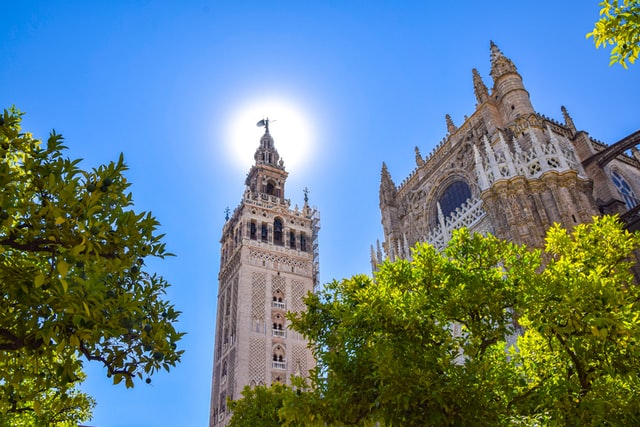
2. Lose yourself in the Barrio de Santa Cruz
With a huge selection of beautifully decorated, narrow streets, the Barrio de Santa Cruz is the perfect place to explore while visiting Seville. Originally the Jewish Quarter of the city, the area’s maze-like structure makes it tricky to maneuver, but don’t let that stop you. There are amazing squares, such as Plaza de Doña Elvira, to discover and beautiful, hidden corners of Seville to enjoy.
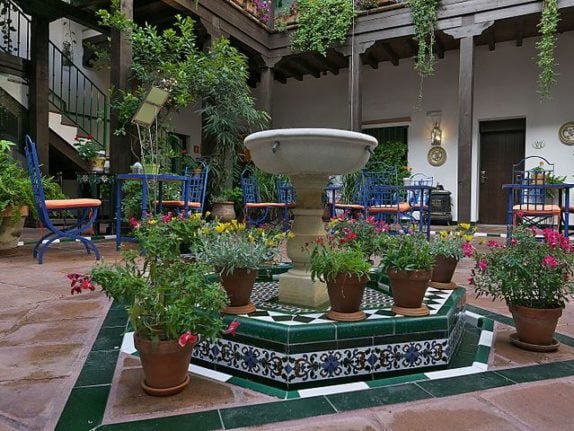
3. Experience the passion and artistry of an authentic flamenco show
As the home of flamenco, Andalucia is the perfect place to experience a traditional, authentic show. However, with such a huge amount of shows available in Seville, and a number of them admittedly geared towards tourists, you have to ensure you choose carefully when deciding on the best place to go. Casa del Flamenco provides a comprehensive overview of flamenco culture with their hour-long shows in a historic, Andalusian patio. With some of Spain’s most accomplished artists performing each night, you’ll not soon forget your Seville flamenco experience.
Flamenco – The passion and power of an authentic flamenco show will stay with you long after you leave Seville. Photo: Devour Tours
4. Savour some of Seville’s best traditional tapas
After a huge surge in the popularity of modern tapas in Seville, there is no shortage of gourmet places to eat. However, while these places certainly provide good food, there is something truly special about stepping into an authentic, off-the-beaten-track tavern to eat among locals. One of our favorite spots is Casa Morales, where you can enjoy everything from spinach and chickpeas to slow-cooked pork cheek, as well as all the thinly sliced cured meats you can handle.
Spinach and chickpeas – Espinacas con garbanzos is one of many typical tapas in Seville that show off the city’s Moorish heritage. Photo: Devour Tours
5. Explore the Moorish history of Seville at the Alcazar Palace
If you are an architecture or history buff, or just appreciate a stroll through some beautiful surroundings, the Real Alcázar is an unmissable stop on your Seville visit. Located just opposite the Cathedral, this Moorish fort which evolved into a Royal Palace is one of the best examples of mudéjar (Moorish & Christian) architecture on the Iberian Peninsula. For fans of TV series Game of Thrones, you may even find some of the Alcázar familiar as this is one of a number of places in Seville where scenes from the show were filmed!
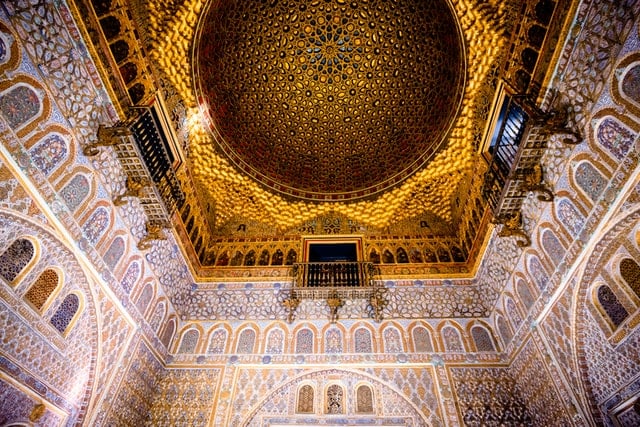
6. Enjoy Seville’s modern side at the Metropol Parasol
Although Seville is a very historic city, it still has a modern side for you to enjoy. The best example of modern architecture in the city is the Metropol Parasol, also known as“Las Setas.”This mushroom-shaped monument is actually the largest wooden structure in the world and caused quite a stir when erected, given its unusual shape and style. However, locals have warmed to it and with carefully excavated Roman ruins to explore underneath and an amazing viewpoint—the best panoramic view of Seville—on top.

7. Sip some iconic local wines
It may be surprising, given it’s a far cry from the sickly sweet drink often thought of when someone mentions sherry, but it’s actually the bone dry manzanilla that is the most popular sherry wine among locals in Seville! You can’t visit the city without trying some, and the authentic atmosphere at Bar Las Teresas makes it a great place to enjoy it, especially when paired with some delicious jamón Ibérico. Not into dry wines? Why not try another Sevillano specialty wine—vino de naranja! The deliciously sweet orange wine has been available at Taberna Álvaro Peregil since Álvaro’s great grandfather introduced it to the city in 1904.
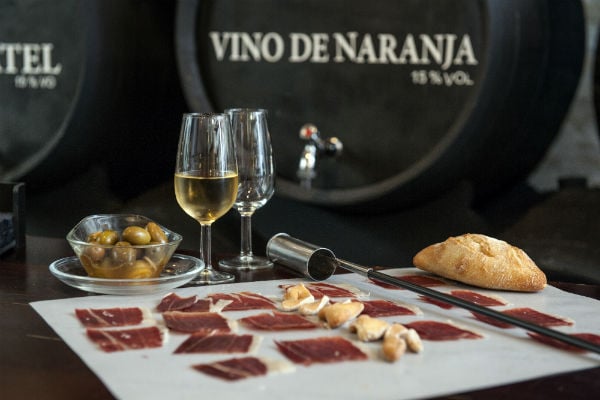 Sherry and Ham – Two things you simply must try when visiting Seville—bone-dry manzanilla sherry and thinly sliced acorn-fed Iberian ham. Photo: Devour Spain
Sherry and Ham – Two things you simply must try when visiting Seville—bone-dry manzanilla sherry and thinly sliced acorn-fed Iberian ham. Photo: Devour Spain
8. Take in the Seville sun at Plaza de España
There are a number of architectural marvels in Seville to enjoy, but none compare to the beauty of the city’s iconic Plaza de España. Built in the lead up to the Ibero-American Exposition of 1929 in the city, the intricate detail of the tilework on this enormous pavilion have made it hugely popular with locals and visitors alike. When visiting the square, don’t miss out on the stunning Maria Luisa park located alongside it, the perfect escape from the hustle and bustle of the city center.
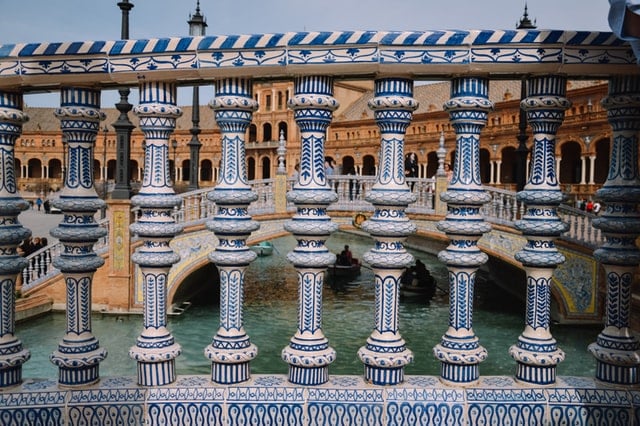
9. Admire Seville’s amazing skyline
With so many beautiful buildings dotted throughout the city of Seville, it’s only natural there would be plenty of places with an amazing view in the city. And what better way to take in the Sevillano skyline than with a drink in hand? Head up to the rooftop terrace of the Hotel Doña María for an amazing view of the cathedral, especially striking at sunset!
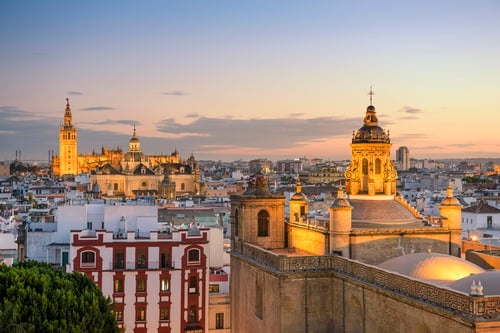
Photo: sepavone/Depositphotos
10. Venture over the river to Triana
While there are plenty of things to do in the center of the city, a trip to Seville isn’t complete without crossing the bridge to visit the Triana neighborhood. Known for its bullfighters, vibrant flamenco scene and delicious tapas, there is a sense of pride unique to the area and the people who call Triana home. Also, Triana is the perfect place to buy some beautiful ceramics, a great souvenir to take home from Seville.

11. Wander through a local food market
Visiting a local food market is a great way to experience local foodie culture for yourself. At Seville’s food markets, you don’t just buy top quality, fresh produce, you can also step into one of the bars in the market and enjoy authentic tapas made from the market’s finest ingredients. A visit to the Mercado de la Feria, Seville’s oldest food market, gives you the perfect combination of both sides of market culture in the city.
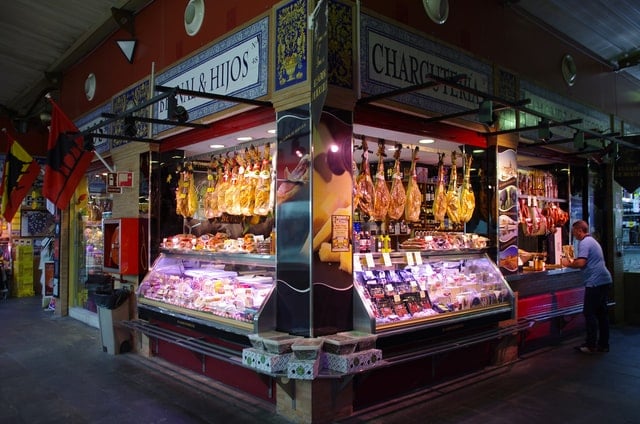
12. Discover the artistic heritage of Seville
Birthplace of artists such as Velázquez, Murillo and Zurbarán, it’s not surprising that Seville boasts one of the most significant art collections in all of Spain. These amazing pieces can be found inside the Fine Arts Museum, a stunning building complete with a typical Andalusian patio.
This article was written by Devour Tours , a company founded by Spanish food lovers as a way to connect hungry travellers with the local, family-run businesses that make amazing food. Devour Tours offers award-winning, fun and delicious food tours and tapas tours in San Sebastián, Seville, Barcelona and Madrid.

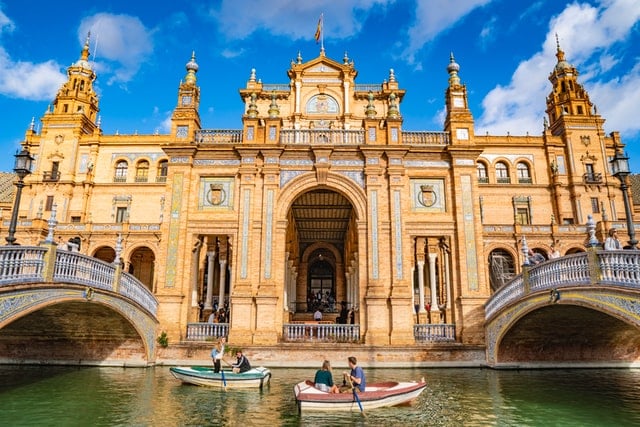
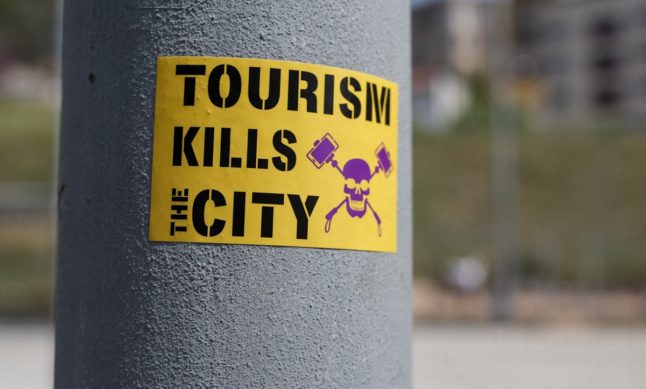

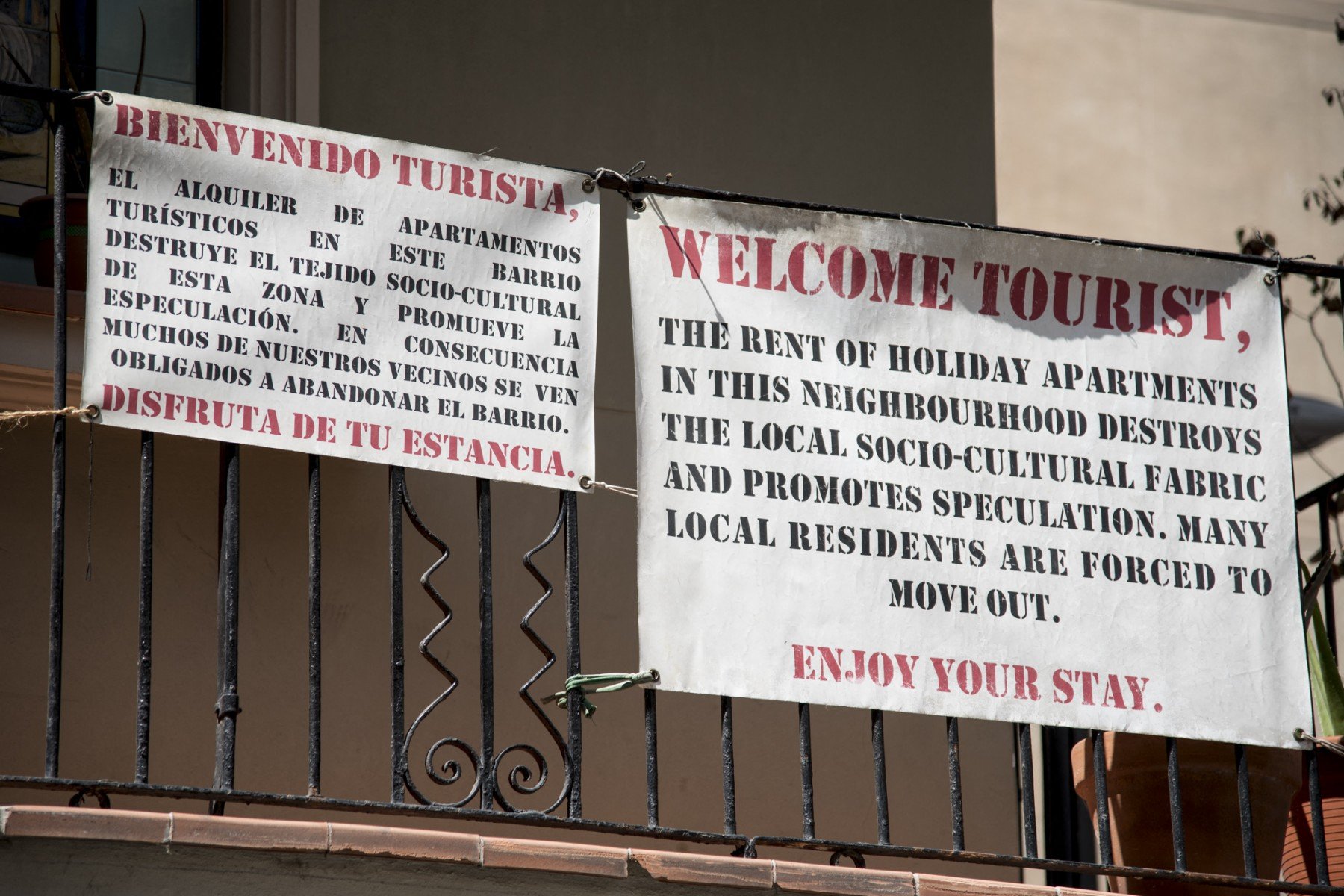
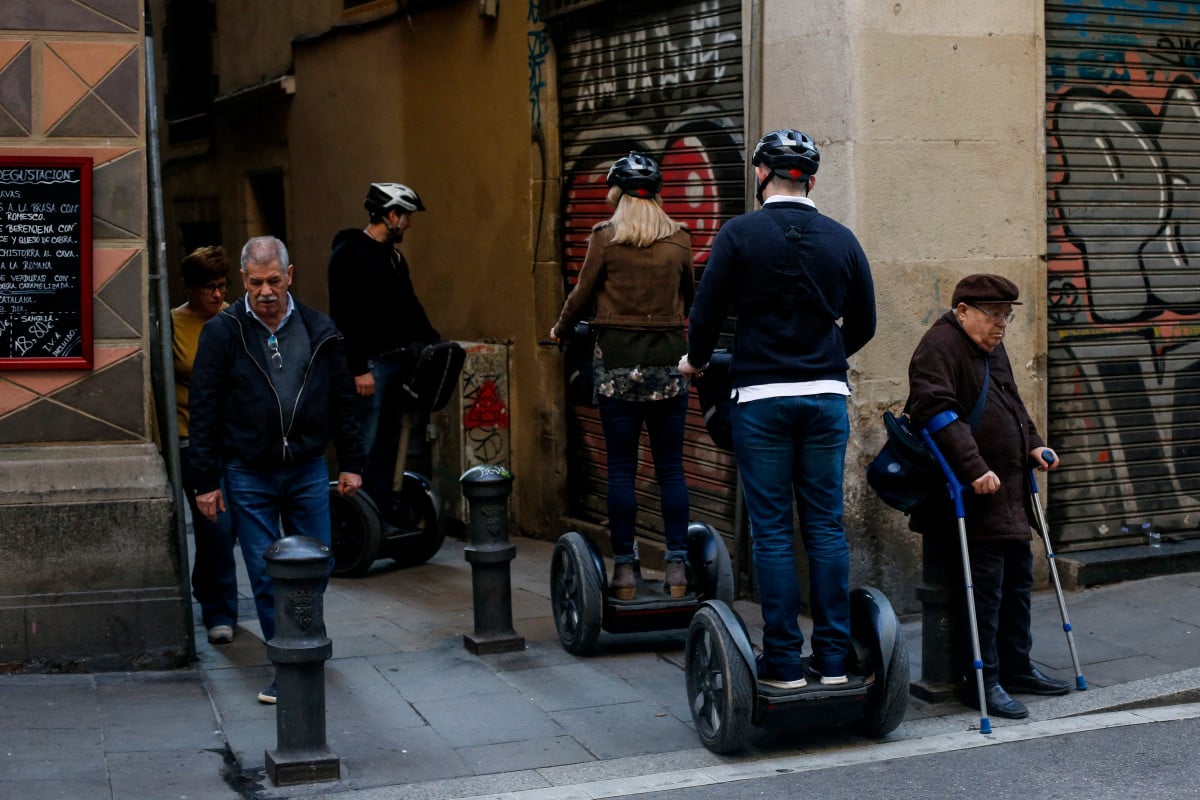
 Please whitelist us to continue reading.
Please whitelist us to continue reading.